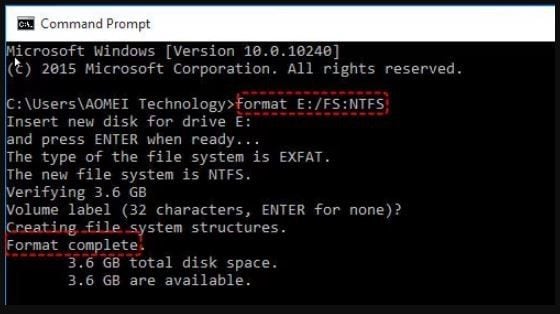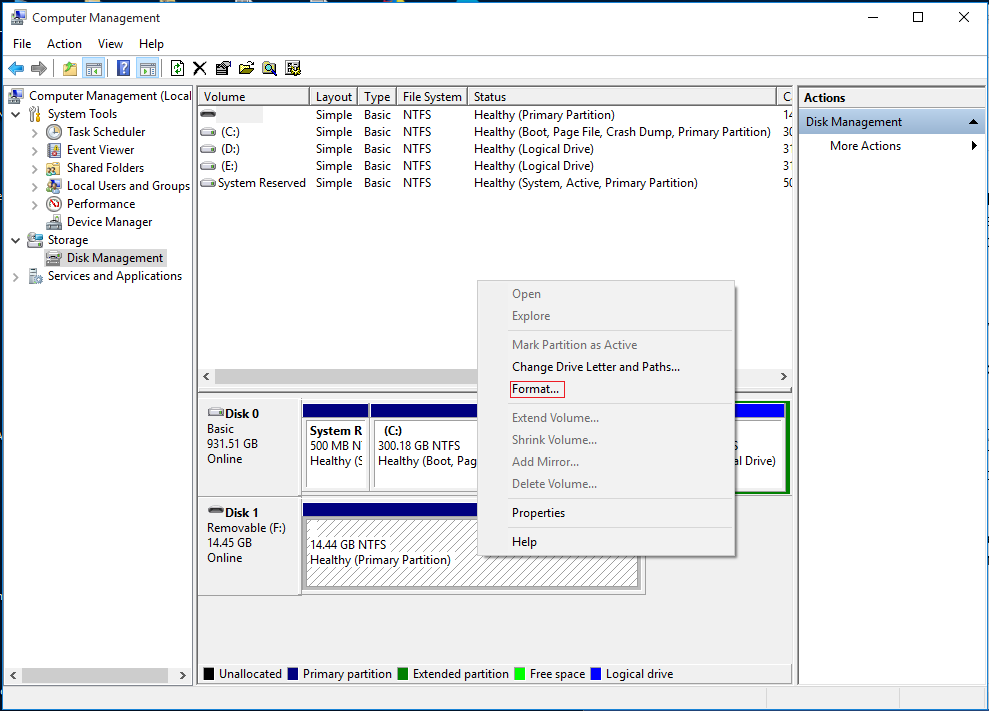How to Convert exFAT to NTFS Windows 10
Have you ever wondered what the words FAT mean when it comes to external storage media? Or maybe you’ve thought about why USB flash drives and other external storage media even have different file types. If you’ve ever contemplated why this is and maybe thought about converting to another file type, keep on reading. In this article, we’ll show you how you can convert exFAT to NTFS.
Convert exfat to ntfs
exFAT and FAT32 are file systems. File systems are a type of organization used by a drive just like filing systems for paper files. It dictates the device how the data will be stored and what kind of information the files would have. File Allocation Table 32 of FAT32 is the earliest version of the file system in Windows. This particular file system is simply too old, dating back to Windows 95. However, many users still convert to this type because it has optimum compatibility with old computers and game consoles. Another caveat of this file system is that it can’t hold files that are larger than 4GB. This is a big hassle for those who use their drives to store large files like videos and programs.
FAT32 is also not an ideal type if you’re going to use it as an internal drive. Extended File Allocation Table or exFAT is a file system that’s used as a replacement to FAT32. It’s very compatible with most operating systems, not limited to Windows. It’s the optimum choice for flash drives. Unlike FAT32, exFAT can store files over 4GB which makes it an ideal file type for flash drives. NT File System or NTFS is the most recent file system employed by Windows. It’s a huge improvement from the older file types. It allows users to increase security by including file permissions and encryptions. It also features a change journal that tracks the changes made within your drive so you can recover any files that may have been lost from unexpected system crashes.
How to Change exFAT to FAT32 File System
One of the reasons for converting exFAT to FAT32 is to enable a device to be compatible with earlier operating systems. Now that you’ve figured out the differences between these file systems, it’s time to choose between which one you’re going to use in your drive. Here are 3 solutions you can employ to change exFAT to FAT32 File System:
Solution 1. Format exFAT to NTFS/FAT/FAT32 Using CMD
Command Prompt is a built-in utility feature of Windows that allows users to make changes to their computer and device’s system using a command-line. It’s a common method used by PC users to want to perform troubleshoots. Carefully follow the instructions below to perform the format:
- Press the Windows key + R to launch Run. Type in cmd then select Enter to go to Command Prompt. Right-click on it to Run as administrator
- Type in the following in the command-line: format E: /FS: NTFS and select Enter
NOTE: E in the command stands for the drive letter. Replace it with the letter of your USB drive.

- The format will now start.
Make sure that you’re writing down the commands correctly to avoid any unexpected errors. Take note of the drive letter you’re going to put in. Make sure it is the one you’re trying to format, otherwise you may end up losing data in that other drive. Unexpected errors can lead to data loss, but the good news here for you is that you can retrieve data with high sucess rate just by a few clicks.
Solution 2. Using Windows Disk Management
Disk Management is another built-in tool created by Microsoft Windows to allow users to manipulate settings of the drives within their computer. It’s also the tool used to create partitions with the drive, to format drives, to rename drives, and other disk management tasks.
- Launch Disk Management. Right-click on This PC then select Manage. Then, go to Disk Management. You can also do this by opening Run (Windows key + R), then typing in diskmgmt.msc in the box.
- Make a right-click on the icon of the USB drive you want to format. Click on Format. Select NTFS.

Solution 3. Format exFAT to NTFS through File Explorer
This is the most convenient and easiest way to perform the format on your computer. This only makes use of what you’re familiar with - the Windows File Explorer. This solution can be performed in two easy steps.
- On File Explorer, find and select your USB drive. Click on Format...
- Under the tab File system, select NTFS to format your USB drive to NTFS.
If you cannot find your drive name in File Explorer, you can try using Windows Disk Management to resolve the issue.
Changing the file type of your device is essential if you want to use it in computers running on different operating systems. Each file type has its advantages and disadvantages as previously mentioned. Using the solutions above, hopefully, you can perform the file type change easily and quickly.
Partition Recovery
- Partition Management
- Solve Partition Problems
- Partition Tips




 ChatGPT
ChatGPT
 Perplexity
Perplexity
 Google AI Mode
Google AI Mode
 Grok
Grok
























Theo Lucia
chief Editor